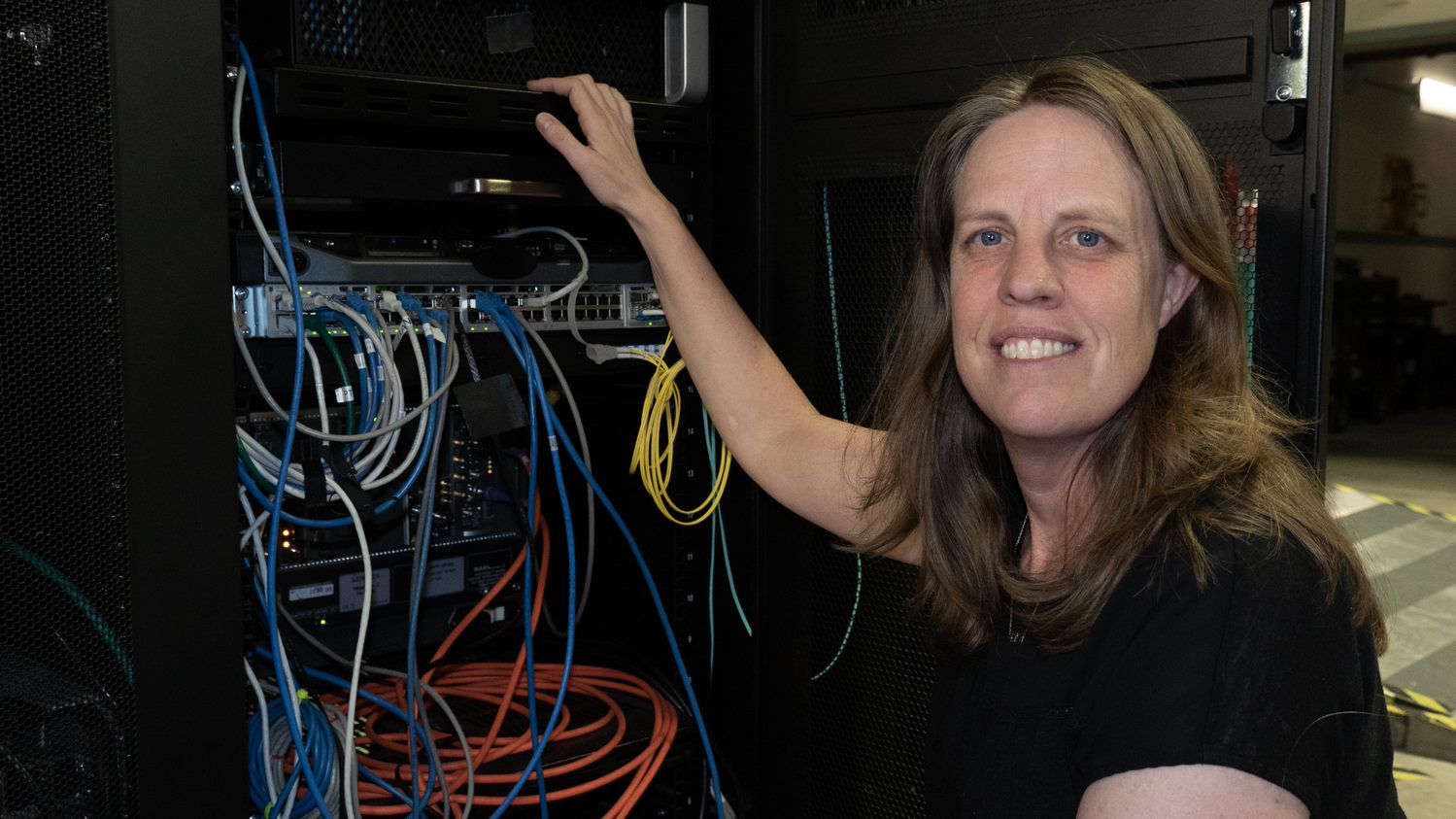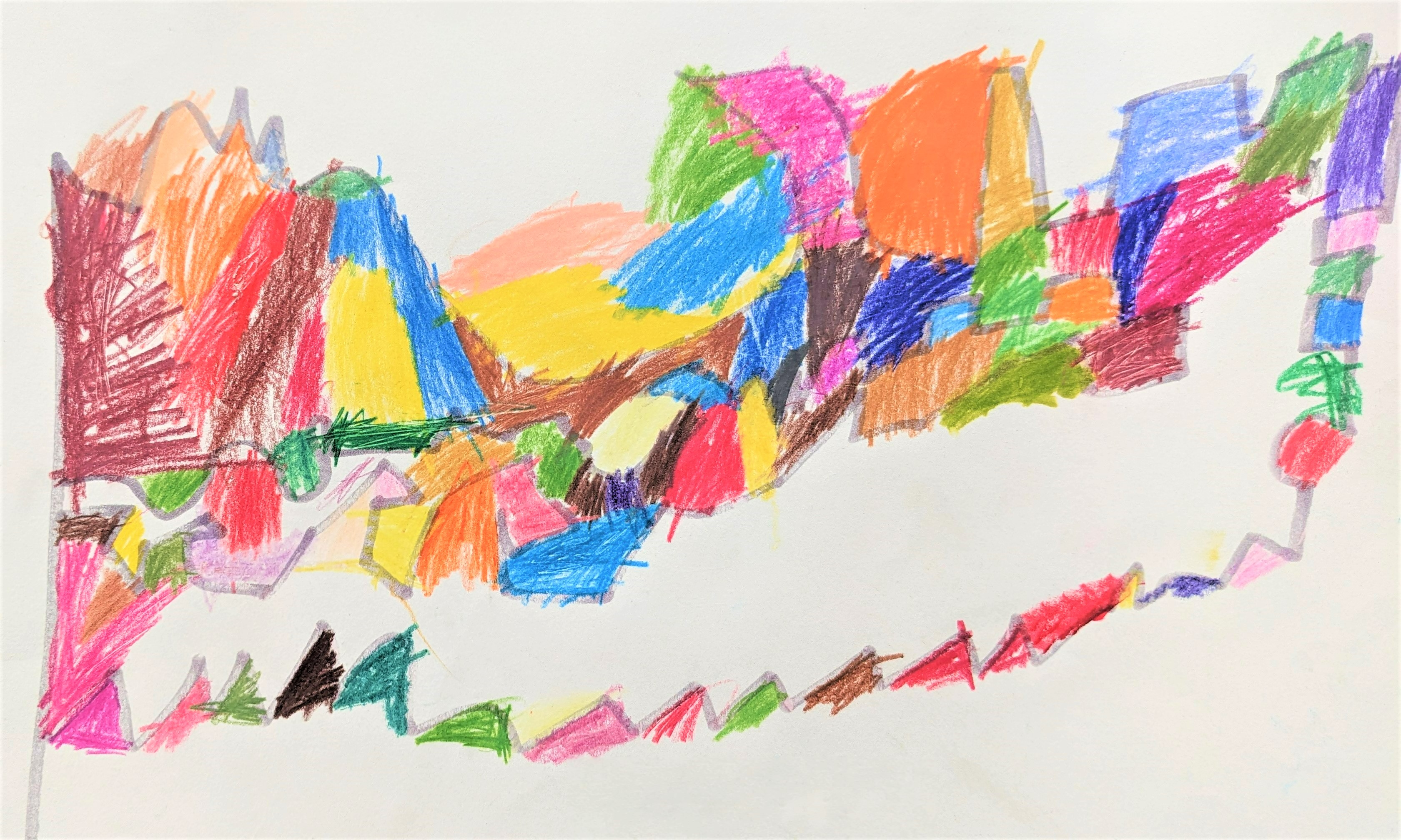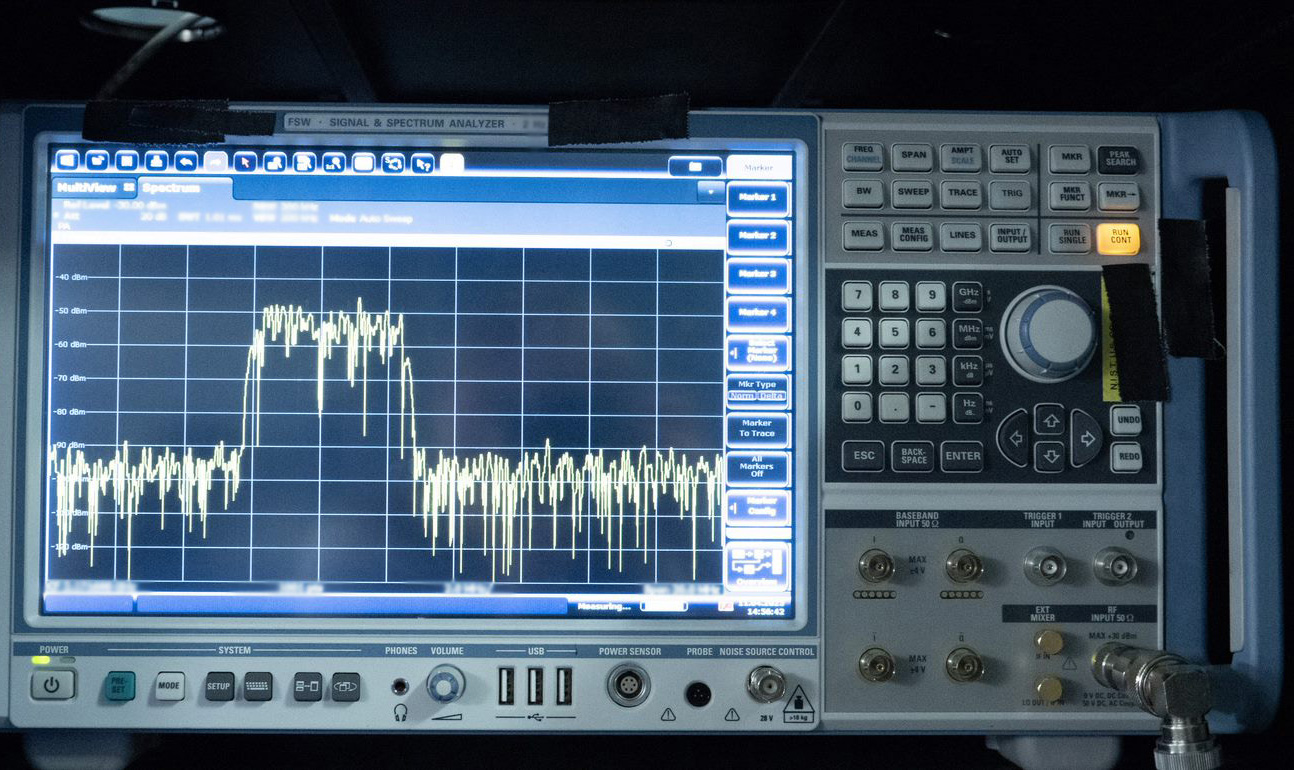Taking Measure
Just a Standard Blog

As I sat with my 7-year-old son for over an hour in front of an abstract painting, I saw what appeared to be black paint thrown onto a white canvas.
My son loves abstract paintings. He was explaining to me how much I was missing by just looking at the paint color. I hadn’t seen the energy flowing through the painting. I didn’t see the chaos or the frustration that my son instantly saw, and the artist later confirmed was there.
He saw beyond and could detect and understand the artist’s behavior.
This wasn’t my son’s first foray into abstract paintings. In first grade, he spent over three months recreating an alphabet letter into a collage of patchwork patterns and colors at his school. (See if you can guess the alphabet letter; the answer will be given at the end of this blog.)

My Kids Show Me the Things I Could Easily Miss Seeing
My children, as I suspect is true for most children, see things differently than my overly educated and highly biased mind. They can see things that I have missed or have simply been trained to overlook as unimportant.
My kids are the reason I came up with our team’s idea for how to detect cybersecurity events on our U.S. critical communication infrastructure.
As scientists, we tend to look very closely and deeply at one aspect of something and then ignore others because of specific metrics and reasoning — just like I was doing with the painting my son admired.
There’s a danger with this approach in cybersecurity because hackers are opportunists. They purposely go where you aren’t protecting and detecting. If we miss infrastructure vulnerabilities, hackers can exploit them.
Our Communication Infrastructure Is at Risk
Communications infrastructure includes the cell towers and networks that allow our phones, GPSs and other devices to communicate with each other.
Government and technology organizations are working to protect this infrastructure, through encryption and other security measures. Everyone is working to harden the target of wireless communication networks.
However, as we’ve become more dependent on mobile technology, concerns about its security have understandably grown.
Why is securing our communications such a challenge? Defending a network of computers that are connected to each other by ethernet cables is itself quite challenging, but adding wireless communication signals makes them even harder to defend. This is especially true if the security system isn’t monitoring the interaction between the signals coming out of your device and the physical environment.
Imagine you have a security camera in the front of your home. You lock the front door and go on vacation. But you left the back door unlocked. A would-be thief can use the unlocked door, and you won’t know because you don’t have a camera on the back door.
In my lab, we can now measure the signal not just at one point but at multiple points as it moves through the local communication infrastructure. This allows us to have a better view of what’s happening overall. If there’s a security breach in one part of the infrastructure, we can detect it elsewhere because we have greater visibility overall from measuring these signals. Just as I couldn’t see the meaning in the painting my son admired, we need to be able to see the whole picture — and all the things that picture is trying to tell us — to defend our networks.
That’s exactly what we’re trying to accomplish with our cybersecurity project. We’re measuring the activity in the wireless signals to detect unusual or nefarious signs that the networks we rely on could be compromised. If we see something in one place that’s concerning, we know we need to investigate in case of a vulnerability.

NIST Research Is Addressing This Visibility Gap
In our NIST project, Device-level Anomaly Framework (DARE), my team and I are looking at those signals that radiate out from our devices using a commercial-grade telecommunication network, known as a radio access network (RAN). A local RAN connects devices like smartphones to the cloud. We use this network to measure the behavior of the signals under the effects of different cybersecurity scenarios. We’re trying to capture unusual activity using the signal — which may indicate compromise.
This multidisciplinary team brings many perspectives to this work. We have experts from advanced wireless communications, cybersecurity and applied mathematics, including machine learning. Measuring the RAN behavior yields statistically complex data. We use that data to build a model that can detect unusual behaviors in our wireless networks.
Like with a lot of scientific research, when we started this process, we weren’t sure it would work. But we have seen a lot of success. We’re currently writing an academic paper that will allow other researchers to build on our work. We hope our research will also allow government organizations and anyone involved in communications infrastructure to use what we’ve learned to make that infrastructure safer.
Bringing My Whole Self to Work Makes Me a Better Scientist
I’ve been quite fortunate to be able to see the world through my kids’ eyes and bring that experience with me to work.
Thanks to this insight from my son’s love of art, I’ve been able to listen to my team, and together, we have been able to go beyond the norm to a new level of measurement science.
As a team member pointed out to me, we don’t just assess one or two metrics of our RAN’s testbed behavior. We investigate thousands of factors to achieve a holistic view of the RAN for our anomalous behavior detector.
The goal of our work is to help wireless providers and others create networks that are more secure for all of us.
Through the great support I have received here at NIST, I am able to bring my whole person to work, not only as a scientist, but also as a parent.
I’m fortunate enough to be able to be very open about my family responsibilities. My experience with the DARE project is a perfect example of how life outside of work can enhance the work itself. I probably wouldn’t have thought of this approach without my son showing me how to see things from his perspective. For the project to succeed, everyone has had to bring their whole selves — including their unique life experiences — to solving such a significant scientific challenge by looking at the problem from all angles.
Diverse Groups of Scientists Do Better Work
It is my fervent wish that other young parents, especially young women in science, can also find kinship with their co-workers to have this experience of being able to bring their whole selves to their science.
I am quite active in the diversity and inclusion initiative here at NIST and in the International Union of Radio Science. I’m trying to encourage more women and people from diverse communities to enter this field, as we all have so many interesting perspectives to bring to the scientific challenges we face. I’m also trying to model for younger people in the field that family responsibilities can not only coexist with a rewarding career but can also enhance your perspective as a researcher.
Just as my team needed diverse talents and perspectives to do our best work, diverse groups of scientists have been shown to publish more frequently and be more likely to develop solutions that benefit more communities. The innovation of this country relies heavily on the work that scientists do, and we need those scientists to represent every part of our society.
The next great idea could be in the mind of someone who never thought they could be a scientist. I want to show them what’s possible, just like my son showed me how to see things in a new way.
Have you guessed the letter of the alphabet in my son’s abstract art? The answer: P.
About the author
Related Posts
Comments
Jeanne, you’ve got it, by George. I’d like to see how many young people are interested by getting involved. Something besides getting caught up into selfish wants. This could be represented in the lower grades, the younger ones. Let’s give them the encouragement to know there are opportunities for each and everyone.
You’re the best Jeanne
Lefa.
This article truly resonated with me on multiple levels. As a mother myself, I can completely relate to the incredible strength, resilience, and multitasking abilities that come with the role. The way the author beautifully intertwines being a mom and protecting our communication infrastructure is truly inspiring.
What a beautifully written and heartwarming article! As a fellow parent and advocate for a robust communication infrastructure, I cannot help but be inspired by your perspective. The way you intertwine the responsibilities of being a mother with the importance of protecting our communication infrastructure is truly enlightening.
Hi Jeanne,
Superb article on exploring the wonders of a child's imagination and innovation through Art. I have a 7-year-old and I really admire your thoughts and view.
Looking forward to more!!
Thanks,
You inspire all specially non scientists to share solutions that actually works.






Thank you for this blog post. It was a joy to read about your and your son's creative minds. I am new to the cybersecurity field and your experience has given me a brighter perspective. Cheers!